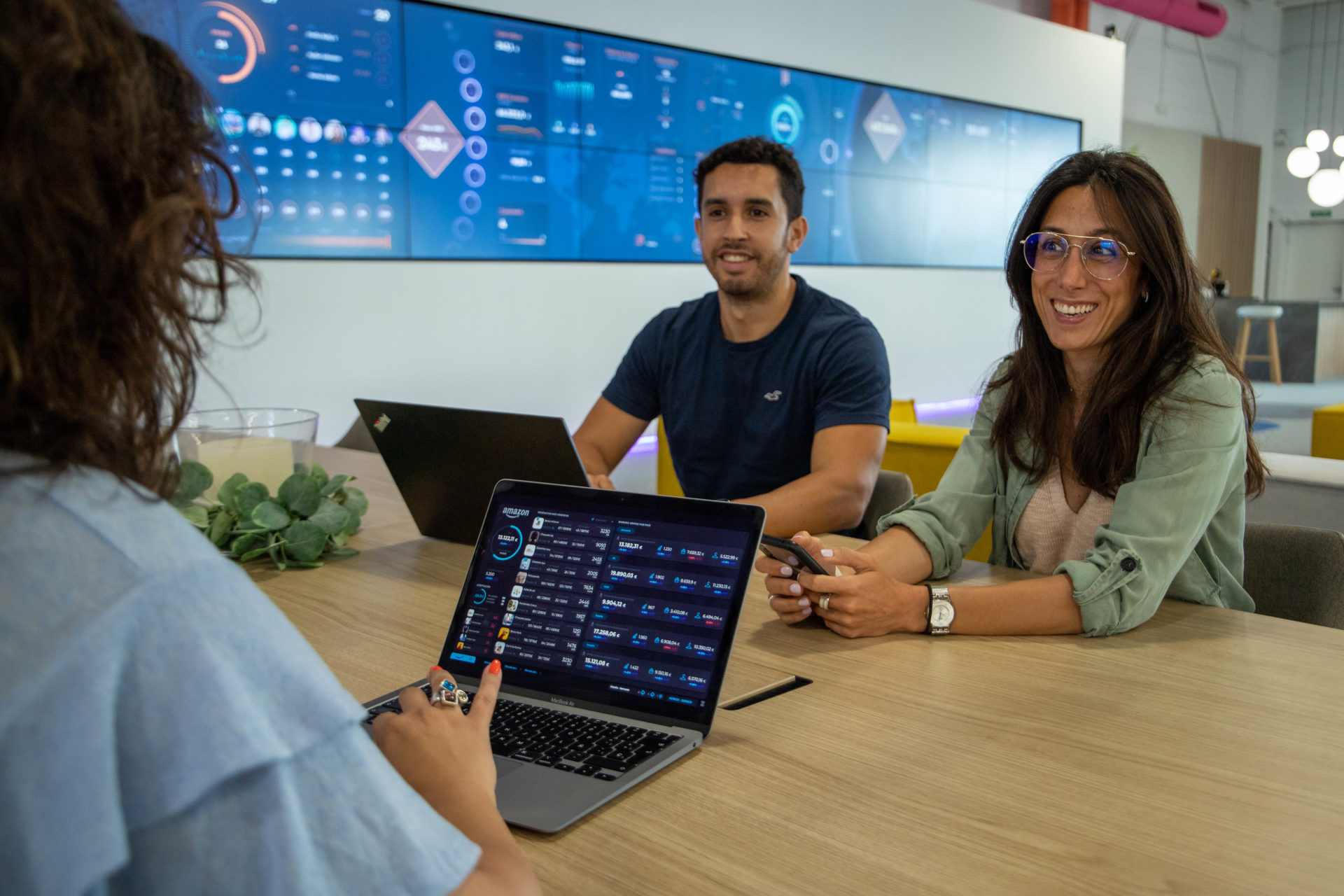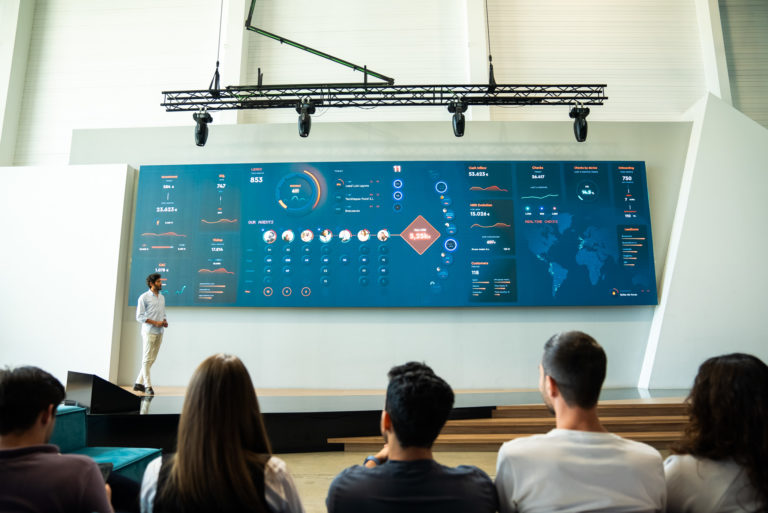Zeus Talks 1: We talk with Amparo about Smart Visual Data

In a world where digital transformation has become a necessity, Smart Visual Data emerges as a pioneer in real-time data visualization and management. In this interview, Amparo García reveals how this technology is revolutionizing the way organizations manage their data, empower their employees, and optimize decision-making. From its beginnings eight years ago to its collaborations with giants like Telefónica and Santander, Amparo shares her inspiring journey and the vision behind a concept that is reshaping the business landscape. Join us to uncover the secrets behind the success of Smart Visual Data!
Interviewer: Welcome, Amparo! It’s a pleasure to have you with us.
Amparo: Thank you very much. It’s a pleasure.
Interviewer: Let’s get straight to the point. What is Smart Visual Data?
Amparo: Smart Visual Data means intelligent, visual data. It’s a concept we introduced some time ago. We started eight years ago with the goal of building compelling dashboards. Basically, we display on large screens how an area, a department, or even an entire business is performing. However, we don’t stop at visualization. We also handle an important part of the process: data cleaning, capturing, organizing, and structuring the information to get a real picture of how the company is doing.
Interviewer: What was the motivation for starting this type of service?
Amparo: We started at a time when there was a lot of talk about digital transformation, which basically meant moving from paper to the digital world. Over the years, companies have accumulated a large amount of data across different departments. Our job is to centralize that data, clean it, and organize it to provide a cross-sectional, real-time view, enabling better decision-making.
Interviewer: And how do these dashboards help companies in their day-to-day operations?
Amparo: The key is real-time visualization. Previously, reports were presented monthly, quarterly, or annually. Now, companies need to see results in real time to make quick decisions. Additionally, we create new workspaces where information is shared democratically, empowering employees by showing them how the company is performing without the need for constant meetings.
Interviewer: Can you give us an example of how this works in practice?
Amparo: Of course. Imagine an e-commerce company where the marketing team is running a campaign to sell jackets during the cold season. If sales are going well but there’s no communication with the sales department and they run out of stock, all the marketing investment is wasted. Our dashboards connect these data points so decisions are made based on informed, real-time information. Real-time visualization allows for quick reactions to any changes. This not only saves time but also reduces the risk of failure. Alerts are also generated to ensure decisions are made in advance.

Interviewer: You mentioned democratizing information. How does this benefit employees?
Amparo: Showing data openly empowers employees. For example, a sales team can see their performance and compare it with their goals. This not only helps to quickly identify issues but also motivates the team by reflecting their achievements in real time. Transparency fosters an environment of trust and collaboration.
Interviewer: Tell me about your main clients and notable projects.
Amparo: We work with over 140 clients across various sectors, from SMEs to large corporations. Some of our notable projects include working with Telefónica on their Social Media Center, with Seat on the Control Tower Supply Chain, and with Balearia to optimize fuel usage on their ships. We’ve also collaborated with Santander on cybersecurity projects and their Social Media Command Center.
Interviewer: What is the philosophy behind your work?
Amparo: We give time and peace of mind. Our clients can trust that the data they see is accurate and real-time, which allows them to make informed decisions. Not all data can be real-time; some is aggregated and viewed annually or monthly. But what’s important is that the relevant data is always visible and up-to-date.

Interviewer: Tell us about the workspaces you design as well.
Amparo: We believe that offices should be spaces for sharing knowledge. While remote work is on the rise, well-designed offices can foster collaboration and the exchange of ideas. We create offices that are recognized as some of the best places to work, with spaces that democratize information and empower employees. For example, a sales department can see in real time how their objectives are progressing without the need for constant reports.
Interviewer: Thank you for sharing your story, Amparo. It’s been very inspiring to learn more about Smart Visual Data and how you’re transforming the way companies manage their data.
Amparo: Thank you. It’s been a pleasure.



